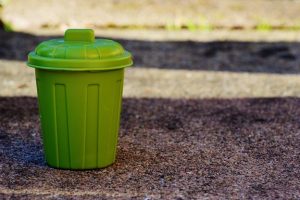Exploring the realm of incontinence products for adults can be overwhelming. Even knowing what term to start researching can be difficult. Adult diapers, adult absorbent underwear, incontinence briefs—where do you begin?
And how can you tell which product will work best? The bad news is that it may take some trial and error while shopping to find the perfect incontinence product for you or your loved one. The good news is that there are many of these products in existence. You are sure to find one that is both effective and comfortable.
You Are Not Alone: Incontinence by the Numbers
Many people are embarrassed by incontinence. The stigma surrounding incontinence can make it an isolating experience that negatively impacts your self-esteem, body image, and sense of self-worth. In severe cases, it can even make working in a job impossible.
However, if you’re suffering from incontinence, you are not the only one. As stated in a fact sheet from the Illinois Department of Public Health, as many as 13 million Americans experience incontinence. That’s almost four percent of the population. It’s hard to feel good about being unable to control your bladder or bowel movements, but there is nothing to be ashamed of. More importantly, help is out there.
It’s estimated that 80 percent of people who have been diagnosed with urinary incontinence could see their symptoms improve or even disappear with treatment or management.
Incontinence is much more common in women than it is in men. Of the 13 million people in the United States who experience incontinence, 85 percent are women. This disparity is likely because women experience life events such as pregnancy, childbirth, and menopause, all of which can impact the nerves and muscles involved in maintaining continence.
Regardless of gender, incontinence increases with age. Physical changes associated with aging, general wear and tear, and other health problems that limit mobility all contribute to increased incontinence with age.
Adult Absorbent Underwear Options
If you are experiencing incontinence, you’re probably desperate to find some form of adult absorbent underwear that will work for you. If you have the means, you’re likely willing to pay any price for the perfect product. Not everyone does. Costs can add up quickly, and many people who experience incontinence are seniors living on a fixed income. This financial burden can make it difficult to find the best incontinence product that is both affordable and effective.
It’s hard to estimate how much incontinence products will cost because there are so many different options. Cost varies depending on the type of incontinence product you use, how severe your incontinence is, and how frequently you change the product. Products that are larger in size, higher in quality, and higher in absorbency capacity tend to be more expensive.
Some products are marketed for a specific gender, which may also influence the price. Medicare, sadly, will not cover the cost of adult diapers even if they are arguably medically necessary. The table below looks at the price per diaper of some of the more commonly used brands.
| Brand | Absorbency | Size | Cost per Diaper |
| Depends Protection Plus+® Underwear for Women | Ultimate | Large | $0.51 |
| Abena Abri-Form Comfort Briefs | L4 (up to 135 fl oz) | Large | $1.43 |
| Tena Incontinence Underwear for Women | Super Plus | Large | $0.64 |
| Attends Advanced Briefs with Advanced Dry-Lock Technology for Adult Incontinence Care | Severe | Large | $0.57 |
| Prevail Extra Absorbency Incontinence Underwear | Maximum Absorbency | Large | $0.60 |
Assuming you use three diapers a day, every day for a month, this means you can expect to pay between $46 and $130, although more or less is possible. Before purchasing an incontinence product in bulk, consider ordering a sample size.
Many companies offer very affordable or even free samples so you can test the product without having to invest a lot of money in it. While potentially time-consuming, this will allow you to find the perfect fit for you.
Absorbency Capacity
It may be tempting to use menstrual pads in place of incontinence products. There is less stigma surrounding buying them, and they are more discrete and easier to dispose of. However, voiding your bladder tends to result in one cup or eight ounces of liquid. That means, unless you’re experiencing very minor leakage such as a few drops when you laugh or sneeze, you likely need an incontinence product.
Unfortunately, there is no standardized language for absorbency levels in incontinence products. After five minutes of shopping, words like “maximum,” “ultra,” “overnight,” and “heavy” will begin to lose all meaning. Another five minutes, and you will begin to wonder if “absorbent” is even a real word because it appears so frequently.
While unhelpful, this language is referring to the amount of liquid the product can absorb. The packaging or sizing information on the web page of many incontinence products may refer to absorbency capacity, which is what you should look at when determining what product to buy. Consider how long you plan to wear the product, how often you will be able to change it, and how often you can make it to the bathroom when making this decision.
Reusable vs. Disposable: Is the Eco-Friendly Option Worth It?
Disposable products generate an incredible amount of waste, but they’re also extremely convenient. Adult absorbent underwear, briefs, pads, and diapers are no exception. Both reusable and disposable incontinence products have benefits and drawbacks.
In addition to reducing waste out of landfills, reusable products can be washed an estimated  300 times. They may be more comfortable and feel more like regular cloth undergarments. However, they are much more expensive upfront, they’re generally worse than disposable products as far as odour elimination goes, and you have to wash them. It may also be inconvenient to change them when you’re out in public as you will then have to carry the soiled product around with you until you’re back home.
300 times. They may be more comfortable and feel more like regular cloth undergarments. However, they are much more expensive upfront, they’re generally worse than disposable products as far as odour elimination goes, and you have to wash them. It may also be inconvenient to change them when you’re out in public as you will then have to carry the soiled product around with you until you’re back home.
Disposable incontinence products allow you to throw the product out and forget about it after you’ve used it. You don’t have to wash them or keep the soiled product with you while you’re out in public. They’re less economical and less environmentally friendly, but they offer better odour control and moisture-wicking technology that helps prevent rashes and skin irritation. In the end, it’s up to you to decide whether you use reusable or disposable incontinence products.
Final Thoughts
You might be hesitant to try incontinence products due to the stigma surrounding them, but there is no reason to be embarrassed or ashamed. Instead, look at incontinence products as a way to reclaim your freedom and independence. Incontinence products are associated with a decreased fall risk for seniors. They can also increase the confidence and mobility of anyone who wears them.




























